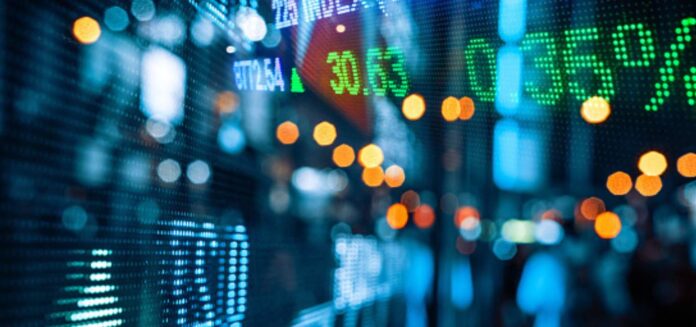Frédéric Leroux, a member of the strategic investment committee and head of cross asset at Carmignac, explores the paradoxical rally in stock markets amidst menacing fundamentals, highlighting the influence of investors’ positioning and the potential impact of the US banking crisis.
Last summer, the mood among investors was particularly bleak, but the past few months have seen substantial gains in stock markets in advanced economies. Between end-September 2022 and end-April 2023, the S&P 500 rose 16%, and the Euro Stoxx 50 added 31%. Despite uncertainty swirling around financial markets, this rally is not atypical and may foreshadow what to expect in the coming months.
The sharp rebound came after a period of unprecedented monetary tightening, the effects of which were compounded by the Ukraine war’s initial impact on energy prices. But the scale of the rebound – which erased all of last year’s losses in European equity indices – can’t be explained by the impending end to monetary tightening, the economy’s gradual return to normal several months after the war broke out, or even by US core inflation starting to fall in October.
While the above factors are undeniably positive, many threats remain, including geopolitical tensions with China, the stretched valuations of US stocks, and the energy conundrum. We also shouldn’t forget the lagging effects of the unprecedented monetary tightening, as illustrated by the US banking crisis.
This banking crisis has squeezed lending and increased the probability of a US recession, but we believe any recession will be relatively moderate. Central banks are astutely aware that a deep recession would make current debt levels unsustainable. Additionally, lower inflation should lead to higher real household incomes5, enabling consumers to absorb part of the economic shock.
At face value, it might seem odd that this kind of economic climate is seemingly having no impact on financial markets, but it’s not so unusual. It reflects a paradox in which market movements are guided more by investors’ extreme positioning than by macroeconomic and geopolitical news.
The 2022–2023 monetary tightening and worries associated with the war in Ukraine prompted a massive selloff, leaving investors with a significant underweight towards equities. This was too pessimistic relative to the news surrounding those two significant developments, and now, the market is poised to rise. As the adage goes: “a bull market climbs a wall of worry.”
Or in other words, when investors’ positioning is too negative for the perception of the market at a given point in time, we see a rally in equities. Those who come late to the party are forced to “buy the dips” if they don’t want to miss out on the bull run. The wall of worry is climbed, and latecomers are required to buy the dips until investors’ positioning is no longer overly conservative or until an unexpected shock –comes along. We saw this in early 2020 when the pandemic abruptly halted the paradoxical market rally that began in 2019.
Expectations for the coming months are typical of the end of a cycle, where stock markets are torn between hopes of a pause in monetary tightening and worries of an economic slowdown. Investors’ positioning today is considerably less pessimistic than it was last summer, but there are still some big diversified and alternative asset managers that are largely underinvested in equities. This could drive a further rise in stock markets.
Beyond that, and in light of the threats still hanging over the economy and financial markets, these asset managers will need to adopt the mantra: “Bad news is good news”, meaning that bad news for the economy is good news for the stock market. This played out in the 2010s when persistently sluggish economic growth resulted in accommodative monetary policy and liquidity injections to support valuations.
Today, the US banking crisis is one bad-news candidate that can be turned into good news. This crisis could reduce lending activity and force the US Federal Reserve to inject large amounts of liquidity into the system. Markets expect this to lead to an economic slowdown that pulls down prices. And the cure for this? Monetary easing.
And so long as a deep recession is avoided, the current paradox in which stock markets are rallying despite the menacing fundamentals could continue.
© 2023 funds europe





